
#23 Hideyoshi, the man who unified the country
Click here to go to the YouTube video

The Jesuit missionary Luis Frois, in his book “History of Japan,” described the man as follows. “He was short, of hideous appearance, and had six fingers on one hand. His eyes were protruding, and he had few whiskers like a Chinaman.”
宣教師のルイス・フロイスは著書『日本の歴史』の中でその男を次のように描きました。「彼は小さく見た目が醜悪で片手に6本の指がある。目は突き出ており中国人のように髭が薄い。」と。

The man was Toyotomi Hideyoshi, the man who ended the Sengoku Period and shaped Japan’s modern era.
その男とは、戦国時代を終わらせ、日本の近世を形作った豊臣秀吉です。

Hideyoshi’s origins are not clear. He was of low birth. His original name was Kinoshita Tokichiro, and he later changed his name to Hashiba Hideyoshi. He rose to prominence and rose through the ranks after serving Oda Nobunaga.
秀吉の出自は明確ではありません。低い身分の出で、元の名を木下藤吉郎といい、後に羽柴秀吉と改名しました。織田信長に仕えてから頭角を表しました。

When Oda Nobunaga died at Honnoji Temple in Kyoto in 1582, Hideyoshi was in the midst of fighting the Mori clan in western Japan. He soon returned to Kyoto and defeated Akechi Mitsuhide in the Battle of Yamazaki. He then defeated Katsuie Shibata at the Battle of Shizugatake, solidifying his position as Nobunaga’s successor.
1582年に織田信長が京都の本能寺で死んだ時、秀吉は毛利氏との戦いのさなかでした。彼はすぐに京都へ戻り明智光秀を山崎の戦いで破ります。そして賤ヶ岳の戦いで柴田勝家を破り、信長の後継者としての地位を確定しました。

Hideyoshi built the magnificent Osaka Castle and successively conquered Shikoku, Kyushu, Kanto, and Tohoku, achieving unification of the country in 1590. Here the Sengoku Period came to an end.
秀吉は壮麗な大阪城を築き、四国、九州、関東そして東北を平定し1590年に天下を統一しました。ここに戦国時代は終わりを告げたのです。
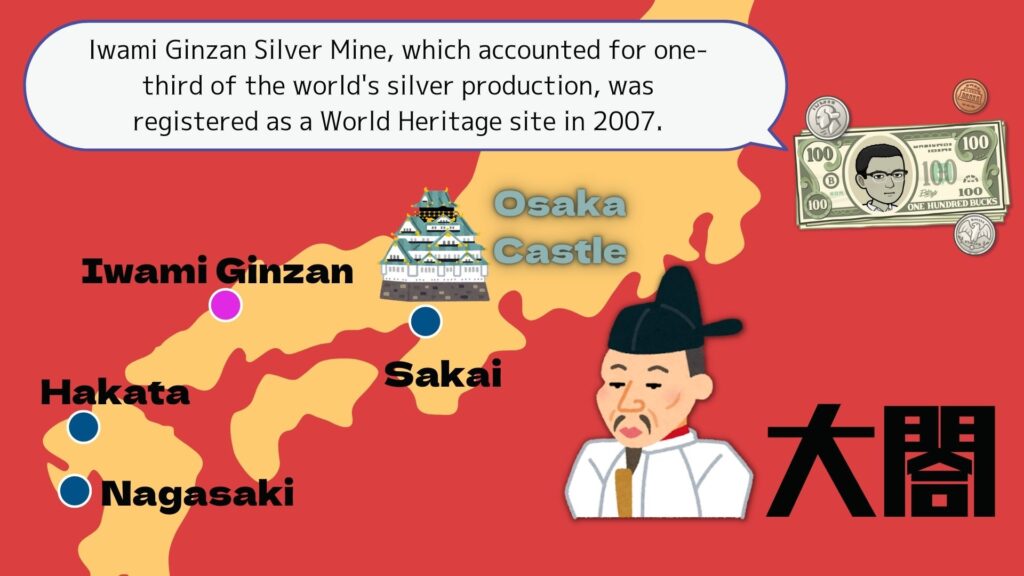
He controlled trading cities such as Sakai, Hakata, and Nagasaki, as well as mines such as the Iwami Ginzan Silver Mine, and consolidated his power with enormous profits. He received the surname Toyotomi from the Imperial Court and became Grand Minister of State, making him the de facto leader of Japan.
彼は堺、博多、長崎といった貿易都市や石見銀山のような鉱山を支配し、莫大な利益を得てその力を確固たるものとしました。そして朝廷から豊臣姓を受け、太政大臣として日本の事実上のリーダーとなりました。
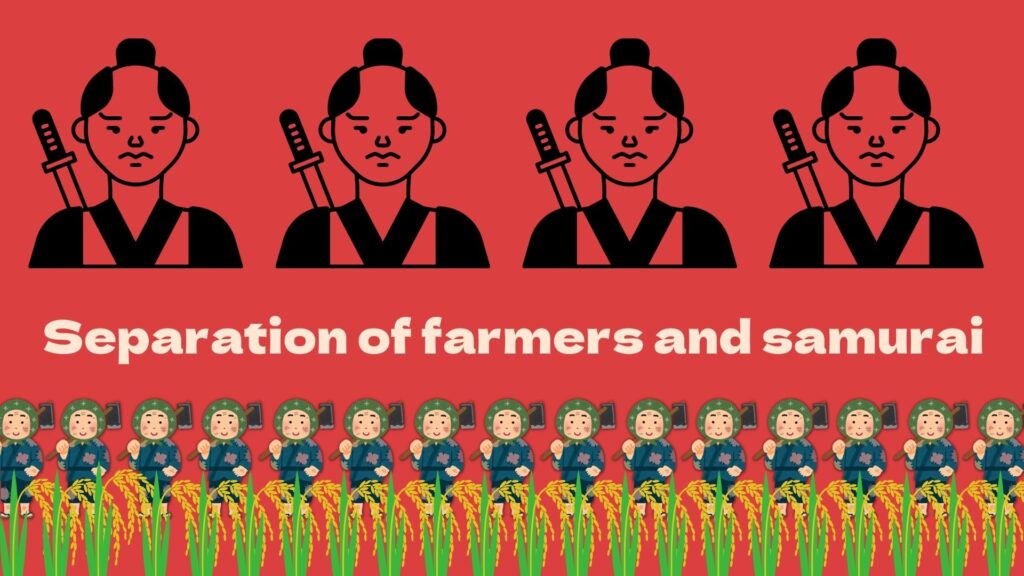
Toyotomi Hideyoshi surveyed the land and took weapons from the peasants. He also promoted a policy of making a clear distinction between samurai and peasants. This led to the formation of an early modern society in which the samurai had strong ruling power.
豊臣秀吉は検地を行い百姓から武器を取り上げ、兵農分離策を進めました。これにより武士が強い支配力を持つ近世社会が形成されました。

Hideyoshi believed that Christianity was an obstacle to the unification of the country and ordered the expulsion of missionaries from the country. He also had 26 Catholics executed by crucifixion in Nagasaki in 1597.
秀吉はキリスト教が天下統一の障害になると考え宣教師の追放を命じました。彼はまた1597年には長崎で26名のカトリック教徒を磔刑に処しています。
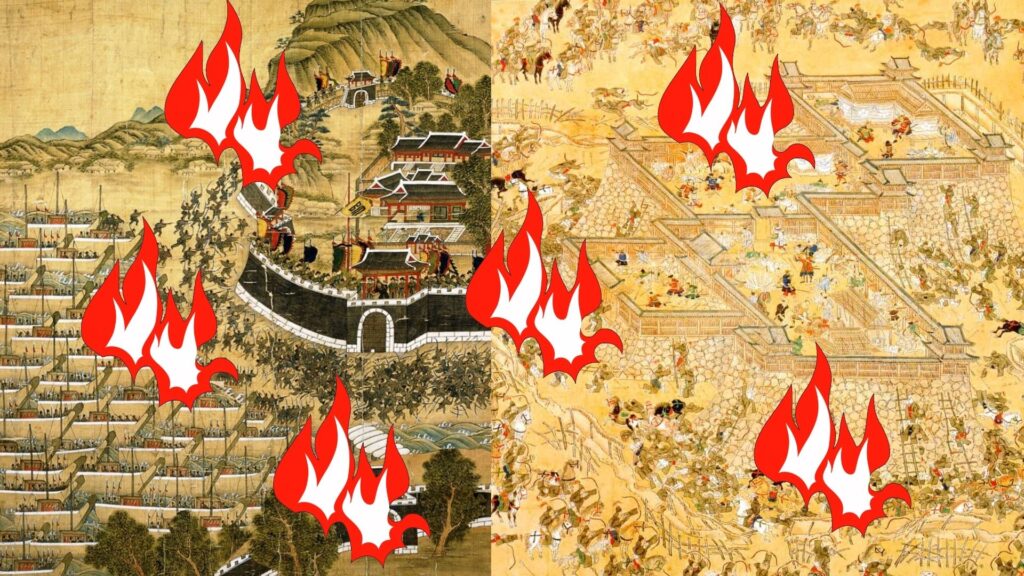
Hideyoshi planned to conquer the Ming Dynasty and India. He sent large armies to Joseon in 1592 and 1598. However, after Hideyoshi’s death from illness, the entire Japanese army pulled back, and the seven-year-long battle ravaged the land of Joseon, resulting in many casualties.
秀吉は明とインドの征服を計画し、1592年と1598年に朝鮮に大軍を派遣しました。しかし秀吉の病死により日本軍は引き返しました。7年間に及ぶ戦乱の結果、朝鮮の土地は荒廃し多くの犠牲者が出たのです。
Thank you for reading.

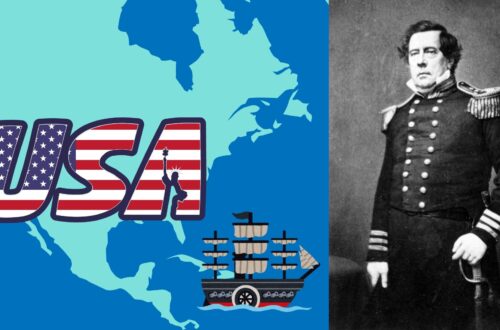
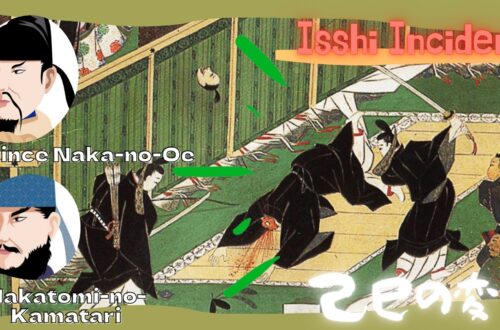

2 Comments
Twicsy
I’m truly enjoying the design and layout of your blog. It’s a very easy on the eyes which
makes it much more pleasant for me to come here and visit more often. Did you hire out a developer to create your theme?
Great work!
sat
Thank you. I do everything myself 🙂